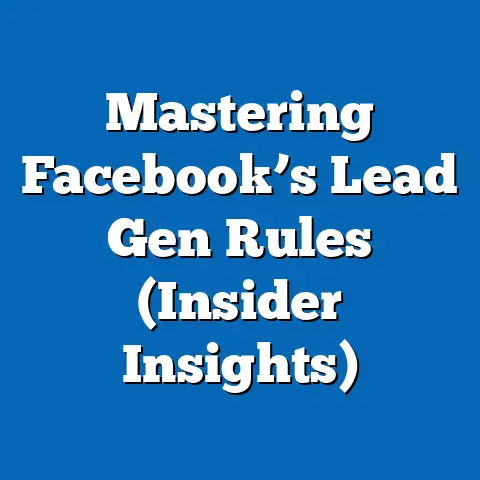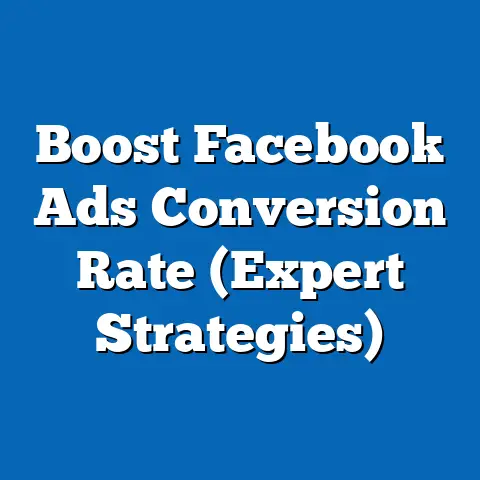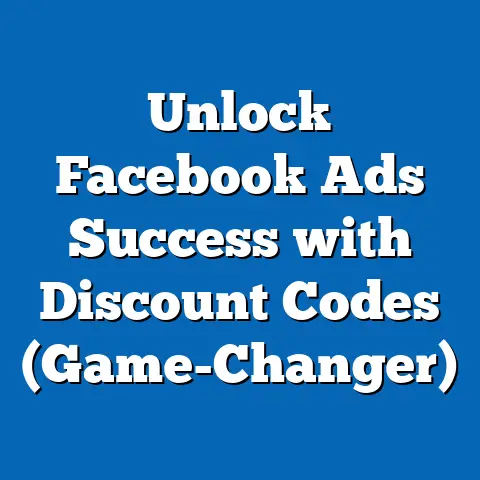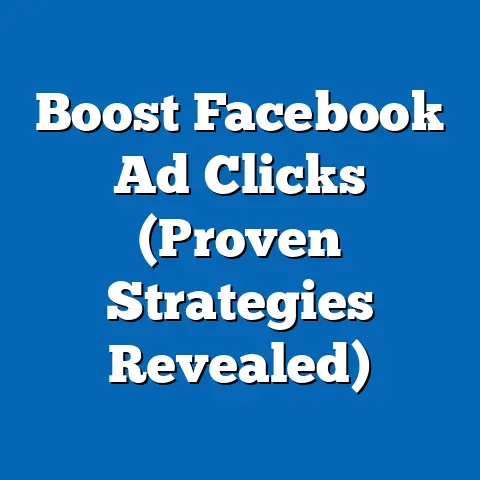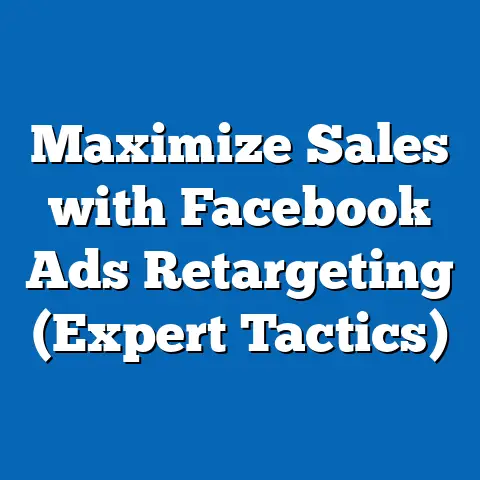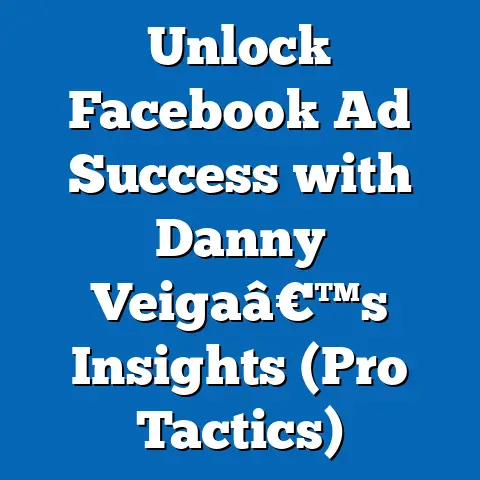Unlock Winning Facebook Ads for Moms (Proven Strategies)
Being a mom is a superpower. Juggling family, work, and everything in between requires incredible strength and adaptability. And if you’re a mompreneur, well, you’re basically a superhero with a side hustle! I know because I’ve been there, done that, and spilled the coffee while trying to do it all.
The beauty of today’s world is that we have the opportunity to build businesses from the comfort of our homes, setting our own hours and being present for our families. But with that freedom comes the challenge of getting our businesses noticed. That’s where Facebook advertising comes in. It’s not just about throwing money at ads; it’s about strategically connecting with the right audience in a way that feels authentic and effective.
Understanding the Facebook Advertising Landscape
Facebook advertising has become an indispensable tool in today’s digital marketing world, and for good reason. With billions of active users, Facebook offers an unparalleled opportunity to reach a vast and diverse audience. But it’s not just about sheer numbers; it’s about the ability to target specific demographics, interests, and behaviors with laser precision.
Let’s start with the basics. Facebook Ads are paid messages that businesses create and display on Facebook and Instagram to reach their target audience. They can appear in the news feed, in stories, on the right column of Facebook, and even within Messenger. The power of Facebook ads lies in their ability to cut through the noise and deliver your message directly to the people who are most likely to be interested in your products or services.
Demographics of Facebook Users: A Mom’s Perspective
As moms, we need to be strategic about where we spend our time and resources. Facebook’s demographics are particularly appealing for reaching other moms. According to recent statistics, a significant portion of Facebook’s user base consists of women between the ages of 25 and 54 – the prime demographic for many mom-focused businesses.
I’ve found that understanding these demographics is crucial. For example, if you’re selling organic baby food, you’ll want to target moms who are interested in healthy eating, parenting, and natural products. Facebook allows you to do just that, narrowing down your audience to those who are most likely to convert into customers.
Types of Facebook Ads: Choosing the Right Format
Facebook offers a variety of ad formats, each with its own unique advantages. Here’s a quick rundown:
- Image Ads: Simple, clean, and effective. These are great for showcasing a single product or service with a compelling image and concise copy.
- Video Ads: Highly engaging and perfect for telling a story or demonstrating how your product works. Video ads can capture attention and leave a lasting impression.
- Carousel Ads: Allow you to display multiple images or videos in a single ad, each with its own headline, description, and link. These are ideal for showcasing a range of products or highlighting different features of a single product.
- Collection Ads: These ads are designed for mobile shoppers and feature a main image or video with a collection of products below. They provide a seamless shopping experience directly within Facebook.
- Lead Ads: Designed to collect leads directly within Facebook, making it easy for potential customers to sign up for your newsletter, request a quote, or download a resource.
- Instant Experience Ads: Full-screen, mobile-optimized ads that load instantly and provide an immersive experience for users. These are great for telling a more in-depth story or showcasing your brand in a visually stunning way.
Choosing the right ad format depends on your goals and the type of product or service you’re promoting. For example, if you’re selling handmade jewelry, high-quality image ads or carousel ads showcasing different pieces would be a great choice. If you’re offering a coaching program, a video ad featuring testimonials from satisfied clients could be more effective.
Recent Trends in Facebook Advertising for Moms
The Facebook advertising landscape is constantly evolving, and it’s important to stay up-to-date with the latest trends. Here are a few recent trends that are particularly relevant to mom entrepreneurs:
- Emphasis on Authenticity: Moms are savvy consumers, and they can spot a fake a mile away. Ads that feel genuine and relatable are more likely to resonate with them.
- Focus on Value: Moms are busy, so your ads need to offer real value. Whether it’s a helpful tip, a discount code, or a solution to a common problem, make sure your ads are providing something of worth.
- Mobile Optimization: The vast majority of Facebook users access the platform on their mobile devices, so it’s crucial to ensure that your ads are optimized for mobile viewing.
- Video Marketing: Video continues to be a powerful tool for capturing attention and conveying your message effectively. Consider creating short, engaging videos that showcase your product or service in action.
- Community Building: Ads that foster a sense of community and connection are particularly effective for reaching moms. Consider creating Facebook groups or hosting online events to engage with your audience and build relationships.
Takeaway: Understanding the Facebook advertising landscape, including demographics, ad formats, and recent trends, is essential for creating successful campaigns that resonate with your target audience. Stay informed, experiment with different formats, and always prioritize authenticity and value.
Identifying Your Target Audience
One of the biggest mistakes I see entrepreneurs make is failing to clearly define their target audience. It’s like trying to hit a bullseye blindfolded. You might get lucky, but you’re more likely to miss the target entirely.
Before you even think about creating your first Facebook ad, take the time to identify your ideal customer. Who are they? What are their interests, behaviors, and pain points? What keeps them up at night? What are their hopes and dreams? The more you know about your target audience, the better equipped you’ll be to create ads that resonate with them and drive results.
The Importance of Audience Segmentation
Not all moms are created equal. Some are stay-at-home moms, while others are working moms. Some have toddlers, while others have teenagers. Some are interested in organic food, while others are more focused on budget-friendly options. Segmenting your audience allows you to tailor your ads to specific groups of people, increasing the likelihood that they’ll be interested in what you have to offer.
I often use a simple exercise to help my clients segment their audience. I ask them to imagine their ideal customer and then create a detailed profile, including their age, location, income, education, marital status, number of children, interests, hobbies, and pain points. This exercise helps them to get a clear picture of who they’re trying to reach and what motivates them.
Tips on Researching and Gathering Insights
There are several ways to research and gather insights about your target audience:
- Talk to Your Existing Customers: One of the best ways to learn about your target audience is to talk to your existing customers. Ask them about their experiences with your product or service, what they like about it, and what could be improved.
- Conduct Surveys: Surveys are a great way to gather quantitative data about your target audience. Use online survey tools like SurveyMonkey or Google Forms to create and distribute your survey.
- Analyze Social Media Data: Social media platforms like Facebook and Instagram provide a wealth of data about your audience, including their demographics, interests, and behaviors. Use Facebook Audience Insights to analyze your audience and identify key trends.
- Read Online Reviews: Online reviews can provide valuable insights into what customers like and dislike about your competitors’ products or services. Read reviews on websites like Yelp, Google Reviews, and Amazon to learn more about your target audience’s pain points.
- Join Online Communities: Join online communities and forums where your target audience hangs out. Pay attention to the conversations and identify common themes and concerns.
Facebook Audience Insights: A Powerful Tool
Facebook Audience Insights is a free tool that provides valuable data about your target audience. You can use it to learn about their demographics, interests, behaviors, and even their purchasing habits.
I remember when I first discovered Facebook Audience Insights, it was a game-changer. I was able to see exactly what my target audience was interested in, what pages they liked, and what products they were buying. This information helped me to create more targeted and effective ad campaigns.
To use Facebook Audience Insights, simply go to the Ads Manager and click on “Audience Insights” in the left-hand menu. From there, you can select your target audience and start exploring the data.
Examples of Successful Audience Targeting Strategies
Here are a few examples of successful audience targeting strategies used by mom entrepreneurs:
- Targeting Moms Interested in Baby Products: A mom selling organic baby clothes could target moms who are interested in baby products, organic food, and natural parenting.
- Targeting Moms Interested in Fitness: A mom offering online fitness classes could target moms who are interested in fitness, healthy eating, and weight loss.
- Targeting Moms Interested in Home Decor: A mom selling handmade home decor items could target moms who are interested in home decor, DIY projects, and interior design.
- Targeting Moms Interested in Travel: A mom offering family travel planning services could target moms who are interested in travel, family vacations, and adventure.
Takeaway: Identifying your target audience is crucial for creating successful Facebook ad campaigns. Take the time to research and gather insights about your audience’s interests, behaviors, and pain points. Use Facebook Audience Insights to analyze your audience and identify key trends.
Creating Compelling Ad Content
Now that you know who you’re talking to, it’s time to craft the message that will resonate with them. Compelling ad content is the heart and soul of any successful Facebook ad campaign. It’s what grabs attention, sparks interest, and ultimately drives conversions. But what makes ad content truly compelling?
Crafting Engaging and Relatable Ad Copy
Ad copy is your opportunity to speak directly to your target audience and explain why they should care about your product or service. It should be clear, concise, and engaging, and it should address your audience’s pain points and offer a solution.
Here are a few tips for crafting engaging and relatable ad copy:
- Know Your Audience: As we discussed earlier, understanding your target audience is crucial. Use the insights you’ve gathered to tailor your ad copy to their specific interests and needs.
- Use a Conversational Tone: Avoid using jargon or overly formal language. Instead, write as if you’re talking to a friend.
- Focus on Benefits, Not Features: Explain how your product or service will benefit your audience. What problems will it solve? How will it make their lives easier?
- Use Strong Calls to Action: Tell your audience what you want them to do. Use clear and concise calls to action like “Shop Now,” “Learn More,” or “Sign Up Today.”
- Keep it Short and Sweet: People have short attention spans, so keep your ad copy concise and to the point.
The Power of Storytelling
Storytelling is a powerful tool for connecting with your audience on an emotional level. Sharing personal anecdotes and relatable stories can help you build trust and establish a connection with potential customers.
I’ve found that when I share my own struggles and triumphs as a mompreneur, my audience is much more likely to engage with my ads. They see me as a real person who understands their challenges, rather than just another faceless corporation trying to sell them something.
Consider sharing stories about how your product or service has helped other moms, or tell a personal story about how you came up with the idea for your business. The key is to be authentic and relatable.
High-Quality Visuals: Eye-Catching Images and Videos
Visuals are just as important as ad copy. In fact, many people are more likely to notice an eye-catching image or video than they are to read the ad copy. That’s why it’s crucial to invest in high-quality visuals that resonate with your target audience.
Here are a few tips for creating eye-catching images and videos:
- Use High-Resolution Images: Avoid using blurry or pixelated images. Use high-resolution images that are clear and visually appealing.
- Choose Relevant Images: Make sure your images are relevant to your product or service and your target audience.
- Use Bright Colors: Bright colors can help your ads stand out from the crowd.
- Show People Using Your Product: If possible, show people using your product or service in your images or videos.
- Keep Videos Short and Engaging: People have short attention spans, so keep your videos short and to the point. Aim for videos that are no longer than 15-30 seconds.
Examples of Successful Ad Content from Mom Marketers
Here are a few examples of successful ad content from other mom marketers:
- A Mom Selling Handmade Baby Blankets: Her ad features a high-quality image of a baby wrapped in one of her blankets, with the caption “Keep your little one cozy and warm with our handmade baby blankets. Made with love and the softest materials.”
- A Mom Offering Online Yoga Classes: Her ad features a short video of her leading a yoga class, with the caption “Find your inner peace and strength with our online yoga classes. Perfect for busy moms who need a little self-care.”
- A Mom Selling Organic Skincare Products: Her ad features a before-and-after photo of herself using her products, with the caption “Get glowing skin with our organic skincare products. Made with natural ingredients that are safe for you and your baby.”
Takeaway: Compelling ad content is the key to success with Facebook advertising. Craft engaging and relatable ad copy that speaks directly to your target audience. Use storytelling to connect with your audience on an emotional level. Invest in high-quality visuals that are eye-catching and relevant.
Setting Up Your Facebook Ads Campaign
Now that you’ve identified your target audience and crafted compelling ad content, it’s time to set up your Facebook Ads campaign. This may seem daunting at first, but I promise it’s not as complicated as it looks. I’ll walk you through the process step-by-step, so you can create a campaign that’s optimized for success.
Step-by-Step Guide to Creating a Facebook Ads Campaign
- Go to the Ads Manager: Log in to your Facebook account and go to the Ads Manager. You can find it in the left-hand menu or by searching for “Ads Manager” in the search bar.
- Click “Create”: Click the green “Create” button to start a new campaign.
- Choose Your Campaign Objective: Facebook offers a variety of campaign objectives, such as awareness, traffic, engagement, leads, app promotion, and sales. Choose the objective that best aligns with your goals. For example, if you want to drive traffic to your website, choose the “Traffic” objective. If you want to generate leads, choose the “Leads” objective.
- Name Your Campaign: Give your campaign a descriptive name that will help you keep track of it.
- Set Your Budget: Choose your budget type (daily or lifetime) and set your budget amount. Start with a smaller budget and gradually increase it as you optimize your campaign.
- Define Your Target Audience: Use the targeting options to define your target audience based on demographics, interests, behaviors, and more. You can also create custom audiences based on your existing customer data or website traffic.
- Choose Your Ad Placements: Select where you want your ads to appear. You can choose automatic placements, which allows Facebook to optimize your placements for you, or you can manually select your placements.
- Create Your Ad: Choose your ad format (image, video, carousel, etc.) and upload your visuals. Write your ad copy, including your headline, description, and call to action.
- Review and Publish: Review your campaign settings and ad content to make sure everything is correct. Then, click “Publish” to launch your campaign.
A/B Testing: Optimizing for Performance
A/B testing, also known as split testing, is the process of testing different variations of your ads to see which ones perform best. It’s a crucial step in optimizing your Facebook Ads campaigns and maximizing your ROI.
I always tell my clients to think of A/B testing as a continuous improvement process. You’re constantly experimenting with different elements of your ads to see what resonates best with your audience.
Here are a few elements you can A/B test:
- Headlines: Test different headlines to see which ones grab attention and drive clicks.
- Images: Test different images to see which ones are most visually appealing and relevant to your target audience.
- Ad Copy: Test different ad copy to see which ones are most engaging and persuasive.
- Calls to Action: Test different calls to action to see which ones drive the most conversions.
- Targeting Options: Test different targeting options to see which ones are most effective at reaching your ideal customer.
To A/B test your ads, simply create multiple versions of your ad with different elements. Then, run your ads and track the results to see which version performs best.
Facebook Pixel: Tracking Conversions and Retargeting
The Facebook Pixel is a small piece of code that you install on your website to track conversions and retarget your website visitors. It’s an essential tool for any business that’s serious about Facebook advertising.
The Facebook Pixel allows you to:
- Track Conversions: See which of your Facebook Ads are driving the most conversions on your website.
- Retarget Website Visitors: Show ads to people who have visited your website but haven’t yet made a purchase.
- Create Lookalike Audiences: Find new customers who are similar to your existing customers.
- Optimize Your Ads: Use the data from the Facebook Pixel to optimize your ads for conversions.
Installing the Facebook Pixel is relatively easy. Simply go to the Events Manager in the Ads Manager and follow the instructions.
Launch Checklist: Ensuring Success
Before you launch your Facebook Ads campaign, make sure you’ve checked off all the following items:
- Defined Your Target Audience: You’ve clearly identified your ideal customer and their interests, behaviors, and pain points.
- Crafted Compelling Ad Content: You’ve created engaging and relatable ad copy and high-quality visuals.
- Set Your Budget: You’ve chosen your budget type and set your budget amount.
- Defined Your Target Audience: You’ve used the targeting options to define your target audience.
- Chosen Your Ad Placements: You’ve selected where you want your ads to appear.
- Created Your Ad: You’ve chosen your ad format and uploaded your visuals.
- Installed the Facebook Pixel: You’ve installed the Facebook Pixel on your website to track conversions and retarget your website visitors.
- Reviewed Your Campaign: You’ve reviewed your campaign settings and ad content to make sure everything is correct.
Takeaway: Setting up your Facebook Ads campaign involves choosing your campaign objective, defining your target audience, setting your budget, creating your ad, and reviewing your campaign settings. A/B testing is a crucial step in optimizing your campaigns and maximizing your ROI. The Facebook Pixel is an essential tool for tracking conversions and retargeting your website visitors.
Analyzing and Optimizing Your Campaigns
Launching your Facebook ad campaign is just the first step. The real work begins when you start analyzing your results and optimizing your campaigns for better performance. Data analysis is the key to understanding what’s working, what’s not, and how to make improvements.
Key Metrics to Monitor
There are several key metrics that you should monitor to gauge the performance of your Facebook ad campaigns:
- Impressions: The number of times your ad was displayed.
- Reach: The number of unique people who saw your ad.
- Click-Through Rate (CTR): The percentage of people who saw your ad and clicked on it.
- Cost Per Click (CPC): The average cost you paid for each click on your ad.
- Conversion Rate: The percentage of people who clicked on your ad and completed a desired action, such as making a purchase or filling out a form.
- Cost Per Acquisition (CPA): The average cost you paid for each conversion.
- Return on Ad Spend (ROAS): The amount of revenue you generated for every dollar you spent on ads.
I always tell my clients to focus on the metrics that are most relevant to their goals. For example, if your goal is to drive traffic to your website, you should focus on CTR and CPC. If your goal is to generate leads, you should focus on conversion rate and CPA. If your goal is to drive sales, you should focus on ROAS.
Interpreting the Data
Analyzing the data from your Facebook ad campaigns can seem overwhelming at first, but it doesn’t have to be. The key is to focus on the key metrics and look for trends.
Here are a few things to look for when analyzing your data:
- High CTR: A high CTR indicates that your ad is resonating with your target audience.
- Low CPC: A low CPC indicates that you’re getting a good value for your ad spend.
- High Conversion Rate: A high conversion rate indicates that your ad is effectively driving conversions.
- High ROAS: A high ROAS indicates that you’re generating a good return on your ad spend.
If you’re seeing low performance in any of these areas, it’s time to make some changes.
Adjusting and Optimizing Your Ads
Based on the insights you’ve gained from analyzing your data, you can start adjusting and optimizing your ads for better performance.
Here are a few things you can try:
- Adjust Your Targeting: If your ads aren’t reaching the right people, try adjusting your targeting options.
- Update Your Ad Copy: If your ad copy isn’t engaging, try rewriting it to be more clear, concise, and compelling.
- Change Your Visuals: If your visuals aren’t eye-catching, try using different images or videos.
- A/B Test Different Variations: Use A/B testing to test different variations of your ads and see which ones perform best.
- Adjust Your Budget: If your ads are performing well, consider increasing your budget to reach more people.
- Pause Underperforming Ads: If some of your ads are consistently underperforming, consider pausing them to focus on the ads that are working.
Ongoing Learning and Adapting
Facebook’s algorithms and advertising policies are constantly changing, so it’s important to stay up-to-date with the latest trends and best practices.
I make it a point to read industry blogs, attend webinars, and follow Facebook’s official announcements to stay informed about the latest changes. This helps me to adapt my strategies and ensure that my campaigns are always optimized for success.
Takeaway: Analyzing and optimizing your Facebook ad campaigns is an ongoing process. Monitor your key metrics, interpret the data, adjust your ads based on your findings, and stay up-to-date with the latest trends and best practices.
Case Studies and Success Stories
Let’s get inspired by some real-life examples of moms who have achieved success with Facebook ads. These case studies will give you a glimpse into the strategies they used, the challenges they faced, and how they overcame them.
Case Study 1: The Handmade Jewelry Mom
Business: A mom who creates and sells handmade jewelry online.
Challenge: Reaching a wider audience and increasing sales.
Strategy:
- Target Audience: Women aged 25-54 who are interested in jewelry, fashion, and handmade goods.
- Ad Format: Carousel ads showcasing different pieces of jewelry.
- Ad Copy: Engaging and descriptive, highlighting the unique craftsmanship and materials used.
- Call to Action: “Shop Now”
Results:
- High-quality visuals are essential for showcasing handmade goods.
- Carousel ads are effective for displaying multiple products.
- Targeting options allowed her to reach a highly relevant audience.
Case Study 2: The Online Fitness Coach Mom
Business: A mom who offers online fitness coaching programs for busy moms.
Challenge: Generating leads and attracting new clients.
Strategy:
- Target Audience: Moms aged 25-44 who are interested in fitness, healthy eating, and weight loss.
- Ad Format: Video ads featuring testimonials from satisfied clients.
- Ad Copy: Emotional and relatable, highlighting the benefits of her program and the support she provides.
- Call to Action: “Sign Up Today”
Results:
- Increased leads by 40%.
- Increased enrollment in her coaching program by 25%.
- Established herself as a trusted authority in the online fitness community.
Key Takeaways:
- Video testimonials are powerful for building trust and credibility.
- Emotional ad copy resonates with moms who are struggling with their fitness.
- Targeting options allowed her to reach moms who are actively seeking fitness solutions.
Case Study 3: The Organic Skincare Mom
Business: A mom who creates and sells organic skincare products for moms and babies.
Challenge: Increasing brand awareness and driving sales.
Strategy:
- Target Audience: Moms aged 25-34 who are interested in organic products, skincare, and natural parenting.
- Ad Format: Image ads featuring before-and-after photos of herself using her products.
- Ad Copy: Informative and persuasive, highlighting the benefits of her organic ingredients and the safety of her products.
- Call to Action: “Shop Now”
Results:
- Increased website traffic by 60%.
- Increased sales by 40%.
- Established her brand as a leader in the organic skincare market.
Key Takeaways:
- Before-and-after photos are effective for showcasing the results of skincare products.
- Informative ad copy educates customers about the benefits of organic ingredients.
- Targeting options allowed her to reach moms who are passionate about organic products.
Takeaway: These case studies demonstrate that Facebook ads can be a powerful tool for mom entrepreneurs. By understanding your target audience, creating compelling ad content, and analyzing your results, you can achieve success with Facebook advertising.
Conclusion
We’ve covered a lot of ground in this guide, from understanding the Facebook advertising landscape to analyzing your campaign performance. I hope you’ve found these strategies helpful and inspiring.
Remember, Facebook advertising is not a one-size-fits-all solution. It requires experimentation, patience, and a willingness to learn and adapt. But with the right strategies and a little bit of effort, you can unlock the power of Facebook ads and take your mom-powered business to the next level.
I encourage you to take action and implement the strategies outlined in this guide. Start small, test different approaches, and track your results. Don’t be afraid to experiment and try new things. The key is to find what works best for you and your business.
As moms, we have a unique perspective and a powerful voice. We understand the needs and desires of our target audience better than anyone else. We have the power to create authentic and relatable ad campaigns that resonate with other moms and drive results.
So go out there and unlock your winning Facebook ads. You’ve got this! And remember, you’re not just building a business; you’re creating a better future for yourself and your family.

